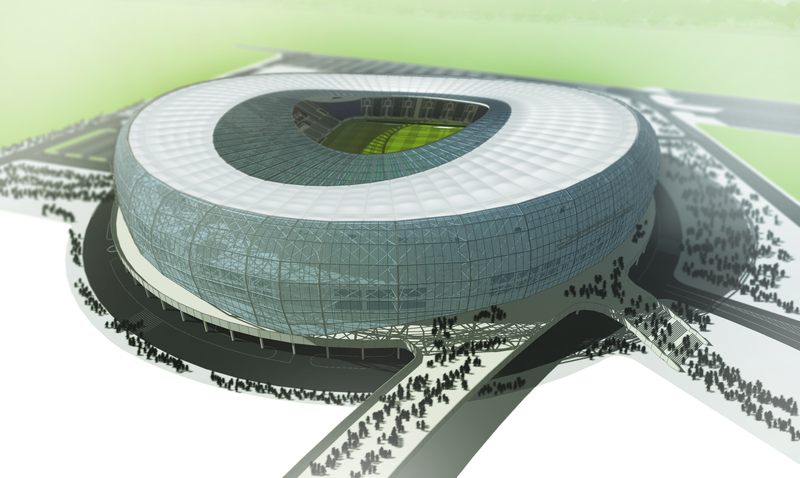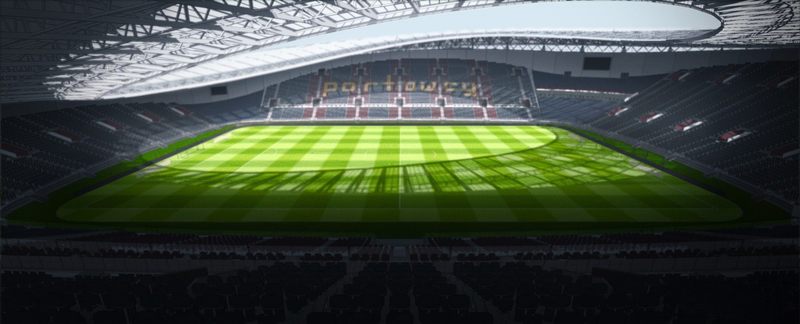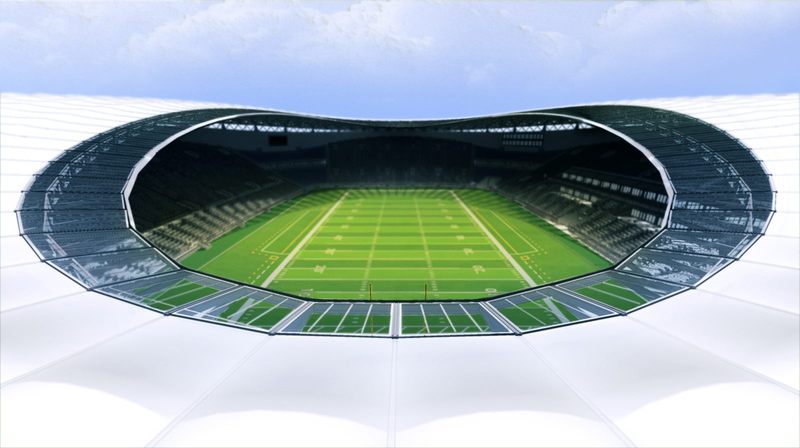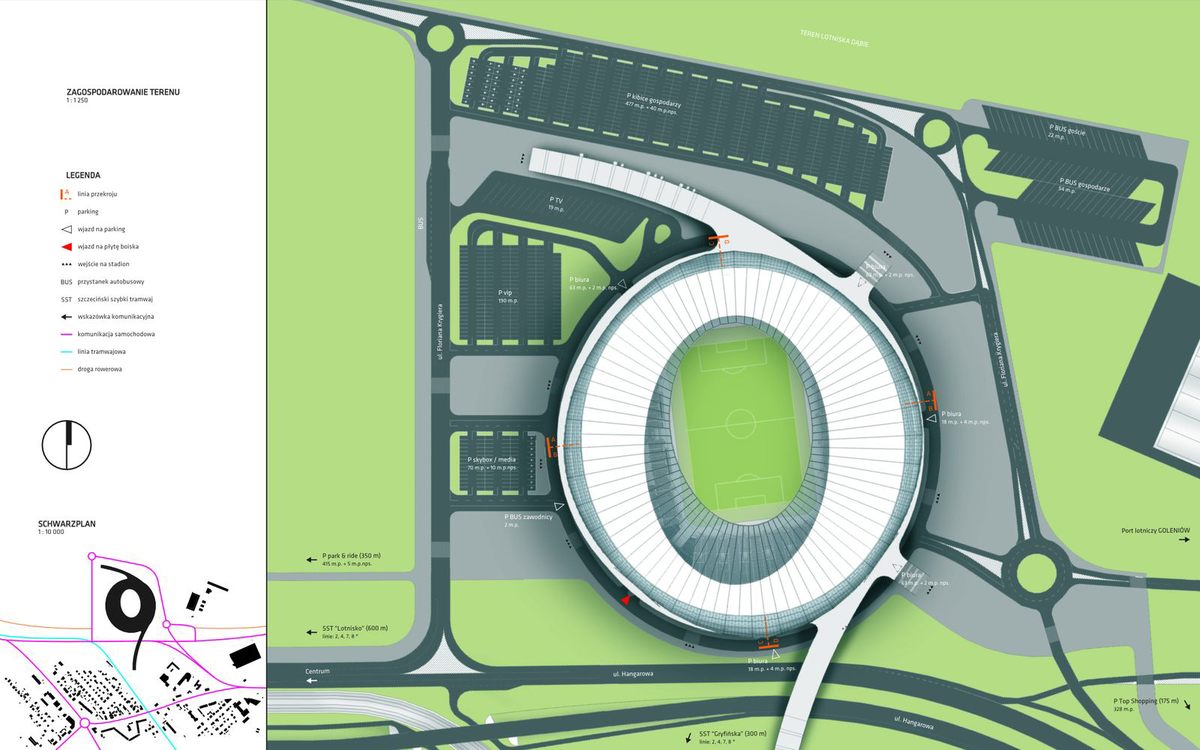Independent design: Splendid stadium for Stettin that won’t be…
source: StadiumDB.com; author: michał
 Dynamic, modern and with future expansion envisaged from the start. But this impressive concept from Stettin isn’t official, which may frustrate Pogoń Szczecin supporters even more than their current situation…
Dynamic, modern and with future expansion envisaged from the start. But this impressive concept from Stettin isn’t official, which may frustrate Pogoń Szczecin supporters even more than their current situation…
Advertisement
The subject of new stadium in Stettin has been coming up numerous times over the past decade and rightly so. Pogoń is one of the very last large football clubs in Poland not to have modern facilities at hand.
After a scheme of building anew in the place of former Dąbie Airport had failed, the municipality has been looking into the plan of thoroughly revamp the current ground, nicknamed slightly ironically “The Papricana”.
 © Mateusz Cegielski, mStadia
© Mateusz Cegielski, mStadia
The most cost-effective concept was selected in 2013, priced at roughly 48 million zloty (€11.5m / $15m), but even this sounds like too much of a challenge for the city. To add to the tense atmosphere, Pogoń chairman announced this year he is considering building a private stadium outside Stettin.
Now a new voice in the debate can be heard. This time from Mateusz Cegielski, local architecture student who perceives the abandoned Dąbie site as the very best there is for a new stadium. Located rather remotely, the site in eastern Stettin might be uncomfortable to walk to, but instead offers modern public transport connection and road infrastructure.
 © Mateusz Cegielski, mStadia
© Mateusz Cegielski, mStadia
Cegielski’s vision has almost zero chance of reaching mainstream of the debate because of Stettin’s financial constraints, but surely deserves a closer look. He proposes a stadium with eye-catching design, yet simple and elegant. Covered with two kinds of cladding – white ETFE membrane and translucent ETFE foil – it’s light and dynamic, lowering towards the northern lakeside.
 © Mateusz Cegielski, mStadia
© Mateusz Cegielski, mStadia
It almost bows to the Dąbie lake, from which it draws most inspiration. The structure repeatedly uses fisherman’s web motive, while also simulating water with its waved design and bluish foil. Then, as a final touch, there’s a beak-alike shape in the southern facade (most exposed side of the stadium), associated with the gryphon, a symbol of both Stettin and Pogoń.
 © Mateusz Cegielski, mStadia
© Mateusz Cegielski, mStadia
Inside the four stands also present a dynamic layout with most massive south end, where Pogoń fanatics would find nearly 6,000 seats to create the vocal support for their team. Overall the seating bowl would accommodate 21,500 people, but this doesn’t include the corners. These would be left empty (despite having concourses and access routes in place) for future expansion to 25,000 seats or more, if standing room is allowed.
Full-resolution images can be found at Mateusz Cegielski's website!
Advertisement
 StadiumDB
StadiumDB